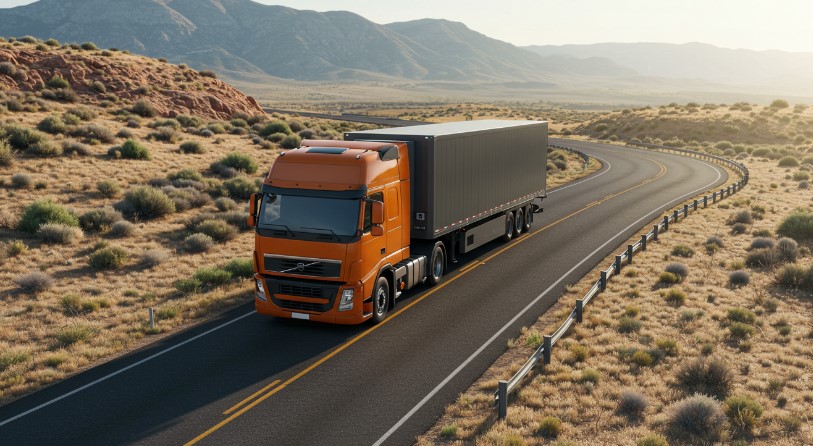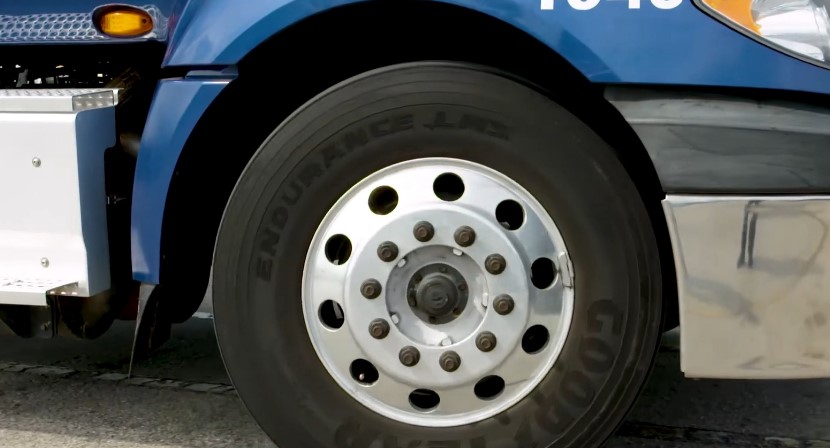Long-distance freight is the backbone of the global supply chain. From coast-to-coast deliveries to international transport routes, heavy-duty trucks keep everything moving – groceries, raw materials, electronics, and everything in between.
And while the engine gets most of the attention, the tires are doing just as much of the heavy lifting. Choosing the right tires for long-haul freight isn’t about grabbing whatever fits and hoping for the best.
It’s about matching the tire to the job – mile after mile, load after load. In 2025, with new technology and sustainability goals reshaping the freight landscape, getting tire selection right can make or break a fleet’s performance and profitability.
Let’s walk through what really matters when picking tires that can go the distance.
Look at Where You’re Driving First

Before you even glance at brands or price tags, take stock of the actual routes your trucks are running. It’s really important when you’re considering a proper truck tire (Austrian quality is renowned in this niche).
Highway-Heavy Routes
Most long-haul freight is done on highways. In that case, your top priority should be low rolling resistance. These tires are built to glide more efficiently on smooth pavement, cutting down on fuel use and operational costs.
According to industry data, simply switching to low rolling resistance tires can boost fuel economy by 3 to 5 percent. Multiply that across a fleet, and the savings are no joke.
Mixed or Rougher Terrain
If your trucks sometimes head into construction zones, unpaved yards, or less predictable rural roads, you’ll want all-position tires that can handle a mix.
They offer a balance – good enough for highway driving, but rugged enough not to fall apart when things get bumpy.
Seasonal Conditions
Climate matters. For fleets running through regions with lots of rain, snow, or freezing temperatures, wet traction and winter-specific tread features become essential. Look for tires with:
- Deeper treads
- Sipes (those small cuts that improve grip)
- Severe snow service ratings, if applicable
A tire built to handle snow and slush will reduce your risk of sliding or hydroplaning when the weather turns ugly.
Match the Tire to the Load

A freight tire is only as good as its ability to carry the weight.
Know Your Load Rating
Each tire has a load index – a number that tells you how much weight it can safely support. Always check the tire’s rating against the maximum weight your truck will carry.
An overloaded tire wears faster, eats more fuel, and is more likely to suffer a blowout.
Position Matters Too
Not all truck tires are created for the same job. Different axles need different features.
| Tire Position | What It Handles | Recommended Tire |
| Steer Tires | Precise directional control, uniform wear | Michelin X Line Energy T |
| Drive Tires | Traction and acceleration, especially in rain | Michelin X Line Energy D |
| Trailer Tires | Straight-line durability and fuel efficiency | Continental EcoPlus HT3 |
Each of those positions takes a different kind of beating, so investing in purpose-built tires is non-negotiable if you want them to last.
Fuel Efficiency Adds Up Fast
Fuel is one of the biggest recurring costs in freight. Tire selection directly affects how much of it you burn.
Focus on Low Rolling Resistance
Tires that are designed to roll with less friction reduce the amount of energy (read: fuel) needed to keep your truck moving. That’s why SmartWay-Certified tires, verified by the EPA, are a smart call.
They’ve been tested for efficiency and are known to save thousands annually per truck in fuel costs. Still, fuel efficiency should never come at the expense of grip.
A tire that slips in rain won’t do you much good. The Michelin X Line Energy series strikes that balance – great mileage, but still solid in wet conditions.
Choose the Right Tire Type for the Job

There’s a reason highway tires dominate long-haul operations.
Highway Tires (H/T)
These are built for life on the interstate. Expect:
- Smoother handling
- Quieter rides
- Longer tread life
- Better fuel economy
H/T tires are ideal when your routes are mostly paved and consistent. They’re not flashy, but they get the job done with minimal fuss.
All-Terrain and Mud-Terrain Tires (A/T and M/T)
Unless your trucks are regularly sent through mud or unpaved roads, steer clear. These tires are noisier, wear out faster, and don’t do your fuel budget any favors.
Tread Pattern Isn’t Just for Show
The grooves in a tire might look cool, but they serve very real purposes.
Highway Tread
For most long-haul freight, go with smooth, symmetrical tread patterns. These keep noise down and help the truck stay straight and stable at high speeds. Less rolling resistance also means more miles per gallon.
All-Weather Tread
If your routes hit wet or icy areas, look for patterns with deeper grooves and sipes. These help eject water and slush, keeping the tire in contact with the road.
Stretching Your Investment
If you’re using high-quality casings (like those from Michelin or Continental), retreading can save big. Well-maintained tires can be retreaded multiple times, cutting your tire costs by 30 to 50 percent.
Take Maintenance Seriously
Tires don’t just take care of themselves. A bit of maintenance goes a long way in keeping them safe and efficient.
Tire Pressure
Keep it dialed in. Even 10 psi underinflated can drag down fuel efficiency by 1 to 2 percent. Overinflation is no better – it leads to uneven wear and poor handling. Set up a regular pressure-check schedule and stick to it.
Rotations
To prevent some tires from wearing out faster than others, rotate them. For long-haul trucks, a typical rotation happens every 10,000 to 20,000 miles, depending on load and conditions.
Alignment
Misaligned wheels don’t just make steering harder – they chew up tires unevenly. Schedule alignment checks every 6 to 12 months, or sooner if drivers report pulling or unusual vibrations.
Think Total Cost of Ownership
Don’t get lured in by the cheapest option. It’s about long-term value, not short-term savings.
Upfront vs. Lifetime Cost
High-end tires like Michelin or Continental may cost more upfront (often over $1,000 for a full set), but they last longer and reduce fuel use.
A cheap tire that lasts 40,000 miles doesn’t beat a premium tire that runs 70,000 and saves you gas along the way.
Warranties
Look for coverage against defects and premature wear. A good warranty is more than a safety net – it’s a sign the manufacturer stands behind their product.
Keep Driver Comfort in Mind

A loud, bumpy ride can wear on even the most seasoned driver.
Go for Low-Noise Options
Tires with smoother tread designs, like the Michelin Defender LTX M/S, offer a quieter, more stable ride. Over hundreds of miles a day, that can make a serious difference in driver fatigue and alertness.
Look for Noise-Reducing Tech
Some newer tires come with built-in materials or patterns that dampen sound. It’s not just marketing – ask any driver who’s spent 12 hours in a noisy cab how much it matters.
2025’s Top Long-Haul Tire Picks
If you’re outfitting a truck or an entire fleet this year, here are some top-rated options:
| Tire | Why It’s a Solid Pick |
| Michelin Defender LTX M/S | Best all-around highway tire, up to 70,000 miles tread life, quiet ride |
| Continental TerrainContact H/T | All-season grip, budget-friendly, long tread life for T- and H-rated sizes |
| Toyo Proxes S/T III | Sporty look, decent durability, better for lighter hauls |
What’s New in 2025
View this post on Instagram
Tires are getting smarter – literally.
Smart Tires
Brands like Michelin and Bridgestone now offer tires with built-in sensors. They report real-time data on:
- Pressure
- Temperature
- Tread depth
Fleet managers can catch problems early, avoiding breakdowns and improving safety.
Eco-Friendly Materials
Sustainability is no longer a trend – it’s a requirement. Modern tires now use:
- Silica-reinforced treads for better fuel economy
- Recycled materials to reduce environmental impact
Michelin’s INFINICOIL and POWERCOIL technologies are examples of how brands are boosting durability and efficiency without sacrificing performance.
Market Growth
According to industry forecasts, the global market for truck and bus radial tires is expected to jump from $19.75 billion in 2024 to $35.9 billion by 2034. That kind of growth signals a lot of innovation – and a lot more choices – for fleet managers.
Know What You’re Buying
Picking tires for long-haul freight is a business decision. It affects your fuel costs, your maintenance schedule, your drivers’ safety, and your bottom line. Start with your routes and weight loads.
Look at tread life and fuel performance. Then factor in comfort, price, and how much peace of mind a good warranty brings. Highway tires like the Michelin Defender LTX M/S or Continental TerrainContact H/T check nearly every box for long-haul needs in 2025.
Add in good maintenance practices and maybe even smart tire sensors, and you’re set up for a safer, smoother, more cost-effective ride. Always double-check your truck’s manual for the correct tire size and load specs before buying.
And if you’re replacing tires, replace all four at once for best balance and performance.
